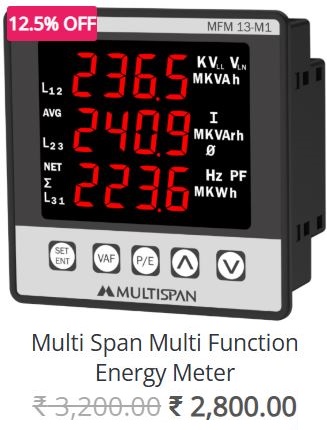In the ever-evolving world of manufacturing, efficiency is key. With the increasing demand for faster production cycles, better quality products, and lower costs, companies are constantly looking for innovative methods to optimize their production processes. One such method that has gained widespread recognition for its ability to streamline operations is One-Piece Flow.
One-Piece Flow is a lean manufacturing principle that emphasizes moving one product at a time through each stage of the production process. This approach contrasts with batch production, where products are produced in large quantities and moved through the process in groups. By focusing on a single product at a time, One-Piece Flow enables manufacturers to create more efficient workflows, reduce waste, and improve product quality.
In this blog, we’ll explore how One-Piece Flow transforms production processes and why it’s a game-changer for manufacturing companies looking to boost performance.
What is One-Piece Flow?
One-Piece Flow is a production method where items move through the manufacturing process one at a time, with minimal delays or waiting between each step. Rather than producing large batches of items and then moving them through various stages of production, One-Piece Flow ensures that each product is individually worked on and completed before moving to the next stage.
This approach is designed to optimize efficiency by reducing the time spent waiting between production steps and ensuring that the flow of work is smooth and uninterrupted. One-Piece Flow aligns with lean manufacturing principles, focusing on eliminating waste, improving quality, and enhancing the overall production process.
The Key Benefits of One-Piece Flow
1. Reduced Lead Time
One of the most significant advantages of One-Piece Flow is the reduction in lead time—the total time it takes to produce a product from start to finish. In a traditional batch production system, products may spend time waiting in queues between each stage of production. However, with One-Piece Flow, products are worked on continuously, leading to faster overall production.
By moving one piece through the entire process at a time, the time spent waiting is minimized, and each product is completed as quickly as possible. This leads to faster delivery times, improved responsiveness to customer demands, and a more agile production system.
2. Improved Product Quality
One-Piece Flow encourages a focus on quality at each stage of the production process. Since each item is worked on individually, operators are able to identify and correct defects as they occur. This real-time quality control helps prevent defects from being passed down the production line and ensures that any issues are addressed before they escalate.
In contrast, with batch production, defects may not be detected until the entire batch has been completed, which can result in the need to scrap or rework a large quantity of products. One-Piece Flow helps maintain consistent quality and reduces the likelihood of defects, ultimately leading to better end products and higher customer satisfaction.
3. Reduced Inventory Levels
One-Piece Flow naturally reduces the need for large inventories. In batch production, manufacturers often produce large quantities of items and stockpile them at various stages of production. This creates inventory build-up and ties up valuable resources.
In contrast, One-Piece Flow operates with minimal inventory, as products are only produced and moved to the next stage when necessary. By reducing inventory levels, companies can free up space, minimize storage costs, and reduce the risk of overproduction or obsolete stock.
4. Enhanced Flexibility and Responsiveness
One-Piece Flow allows manufacturers to be more flexible and responsive to changes in demand. Since products are produced one at a time, manufacturers can easily adjust production schedules or switch between different product variants without the need for major setup changes.
This flexibility is especially beneficial in industries with fluctuating customer demands or those that produce customized products. It allows businesses to adapt quickly, ensuring that they meet customer expectations without unnecessary delays or wasted resources.
5. Lower Costs and Waste Reduction
A core principle of One-Piece Flow is the elimination of waste—whether that’s time, materials, or labor. By moving items through the production process one at a time, manufacturers reduce unnecessary waiting times, transportation, and handling, all of which contribute to operational waste.
This streamlined approach minimizes overproduction, defects, and excess handling, leading to lower costs and a more efficient use of resources. As a result, companies can improve profitability by reducing waste and operating more leanly.
6. Improved Worker Engagement
One-Piece Flow places a greater focus on individual responsibility, which often leads to improved worker engagement. In a batch production system, workers may be tasked with repetitive tasks on large quantities of products, which can lead to boredom or disengagement.
With One-Piece Flow, employees are responsible for ensuring the quality and completion of each individual item. This provides a sense of ownership and pride in the work, as operators can see the direct impact of their efforts on the product. This greater sense of responsibility often results in improved morale and motivation on the shop floor.
How to Implement One-Piece Flow
Implementing One-Piece Flow in your production process requires careful planning and some key changes to your operations. Here are the essential steps to get started:
1. Map the Current Process
Start by analyzing and mapping your current production process. Identify each step of production and assess where delays, bottlenecks, or inefficiencies exist. This will help you understand the areas that need improvement and where One-Piece Flow can have the greatest impact.
2. Redesign the Layout
One-Piece Flow often requires changes to the physical layout of the production floor. The goal is to organize workstations in a way that allows products to flow smoothly from one step to the next. Consider arranging workstations in a straight line or in a U-shaped configuration to minimize movement and reduce unnecessary transportation time.
3. Balance Workloads
Ensure that each workstation is balanced in terms of workload. No single station should be overwhelmed with too many tasks, as this can lead to delays and slow down the entire process. Workload balancing ensures that the production flow is consistent, with each station performing its tasks efficiently.
4. Train and Empower Employees
To make One-Piece Flow successful, it’s important to train your employees on how the system works and the role they play in it. Empower your workers to take ownership of their tasks, with an emphasis on quality control and problem-solving. Employees should be encouraged to stop the process if they detect an issue, ensuring that quality is maintained at every stage.
5. Start Small and Scale Up
It’s often best to implement One-Piece Flow in small sections of your production line initially. Test the system with a single product line or a specific work area, then assess the results. Once you’ve worked out the kinks, you can scale up the implementation to other areas of production.















